Darrow, Huntley et al. 2016 Media Kit
-
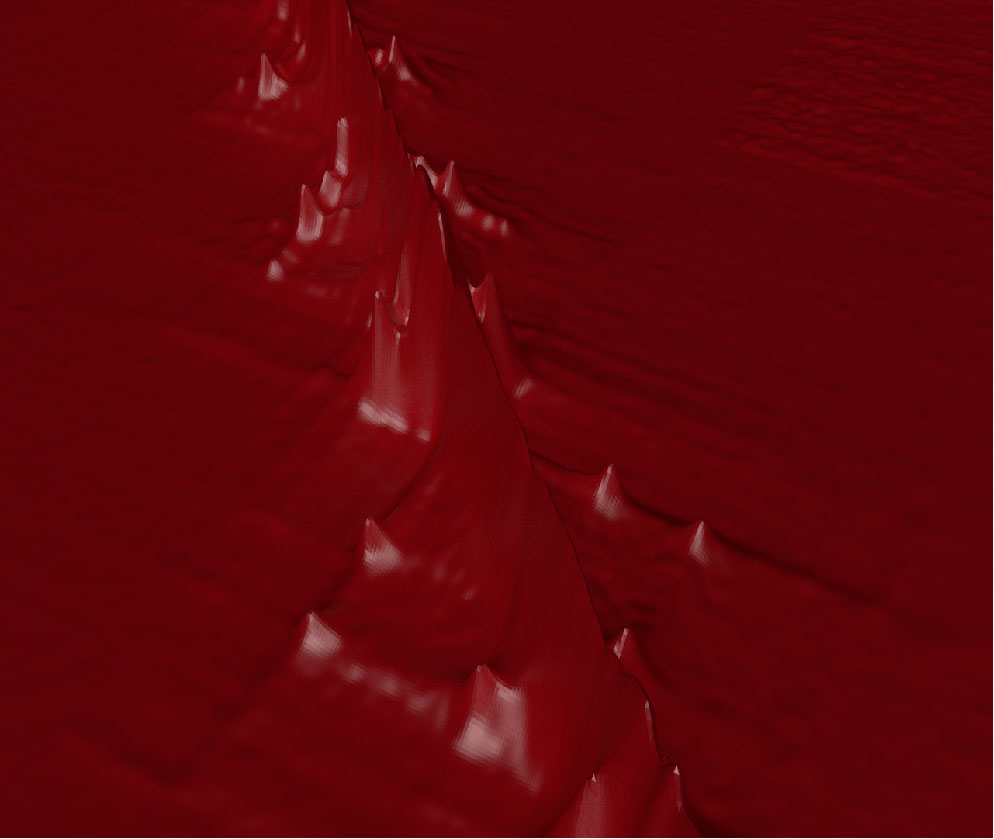
3D Contact Map 1
The Hi-C method measures how frequently two loci in the genome make physical contact in the nucleus of the cell. Here, a Hi-C contact map rendered as a three-dimensional surface. Strong proximity between nearby genomic loci creates a ‘wall’ bisecting the landscape. Peaks in the contact map correspond to loops in the genome.
Credit: Ido Machol, Erez Lieberman Aiden. Rendered by Ido Machol. -
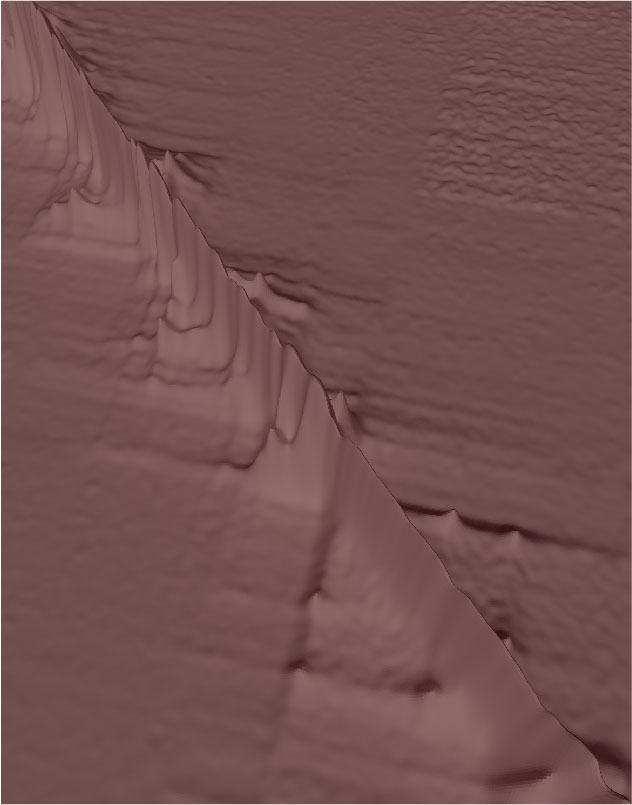
3D Contact Map 2
The Hi-C method measures how frequently two loci in the genome make physical contact in the nucleus of the cell. Here, a Hi-C contact map rendered as a three-dimensional surface. Strong proximity between nearby genomic loci creates a ‘wall’ bisecting the landscape. Peaks in the contact map correspond to loops in the genome.
Credit: Ido Machol, Erez Lieberman Aiden. Rendered by Ido Machol. -

3D Contact Map 3
The Hi-C method measures how frequently two loci in the genome make physical contact in the nucleus of the cell. Here, a Hi-C contact map rendered as a three-dimensional surface. Strong proximity between nearby genomic loci creates a ‘wall’ bisecting the landscape. Peaks in the contact map correspond to loops in the genome.
Credit: Ido Machol, Erez Lieberman Aiden. Rendered by Ido Machol. -

Artist’s Interpretation, Mary Ellen Scherl 1
An artist's interpretation of chromatin folded up inside the nucleus. A DNA globule is sculpted with long metal wire. Cherubs called "putti" dance around, unfold, and dive into the DNA.
Credit: Mary Ellen Scherl. -
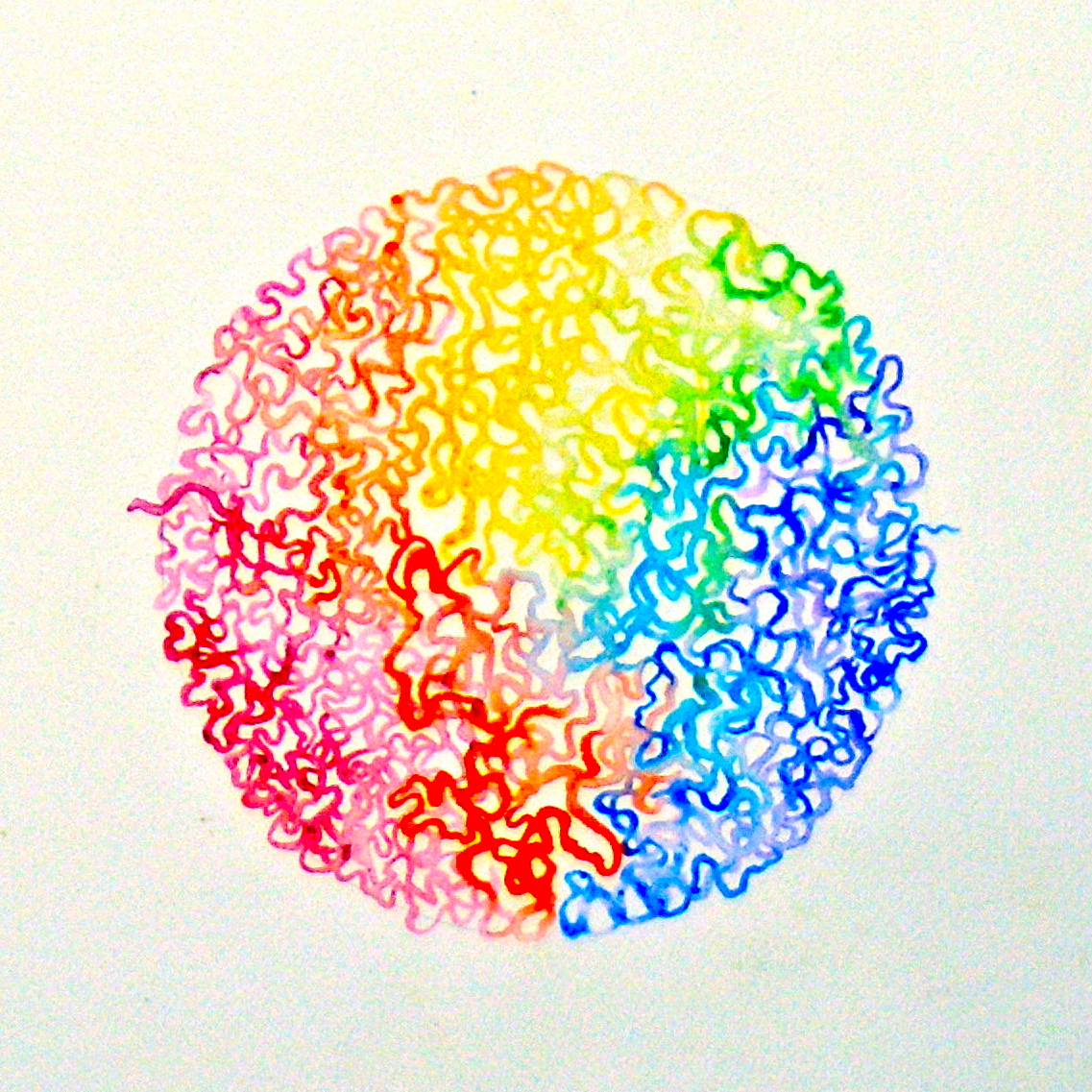
Artist’s Interpretation, Mary Ellen Scherl 2
An artist’s interpretation of chromatin folded up inside the nucleus. The artist has rendered an extraordinarly long contour into a small area, in two dimensions, by hand.
Credit: Mary Ellen Scherl. -
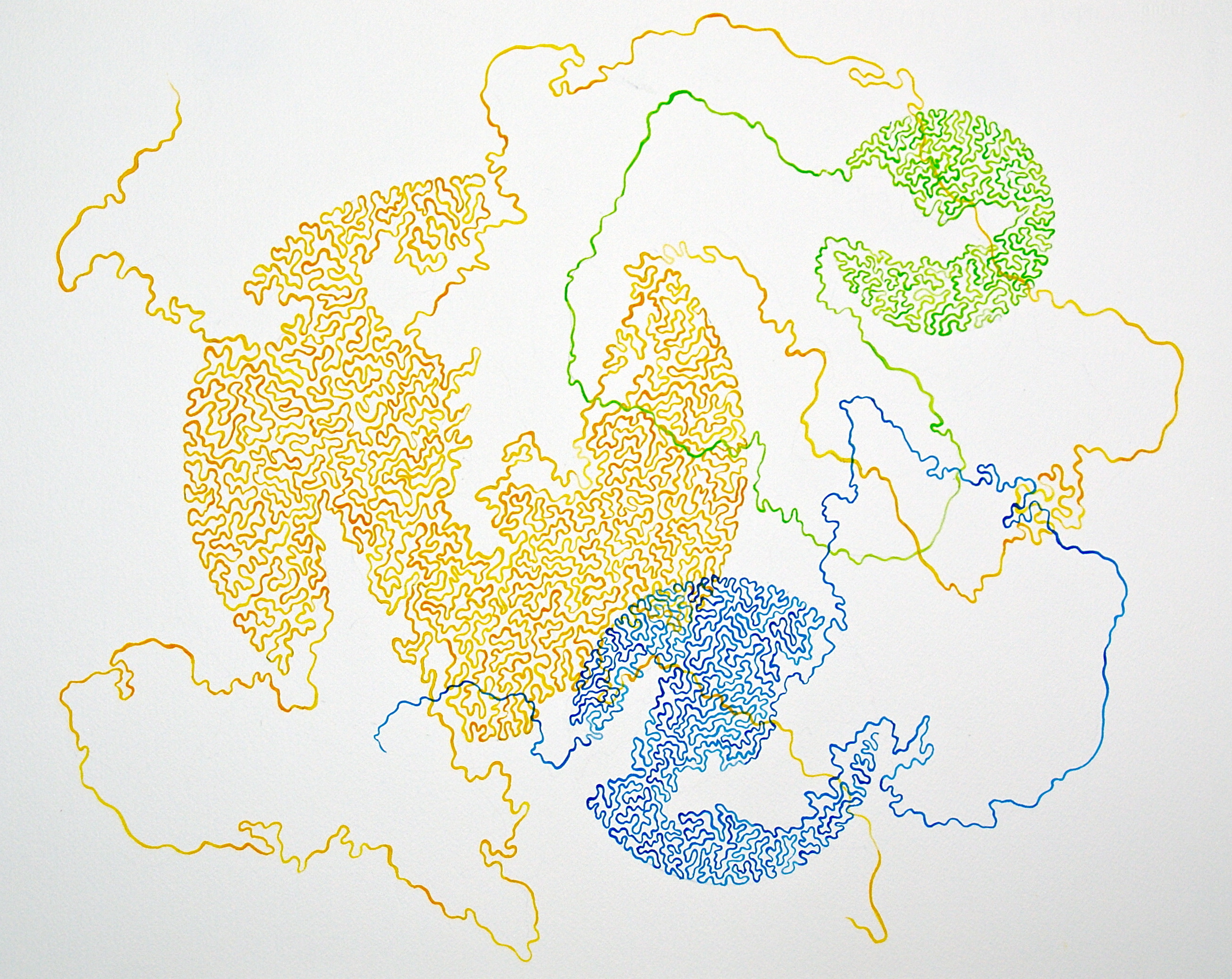
Artist’s Interpretation, Mary Ellen Scherl 3
An artist’s interpretation of chromatin folded up inside the nucleus. The artist has rendered an extraordinarly long contour into a small area, in two dimensions, by hand.
Credit: Mary Ellen Scherl. -
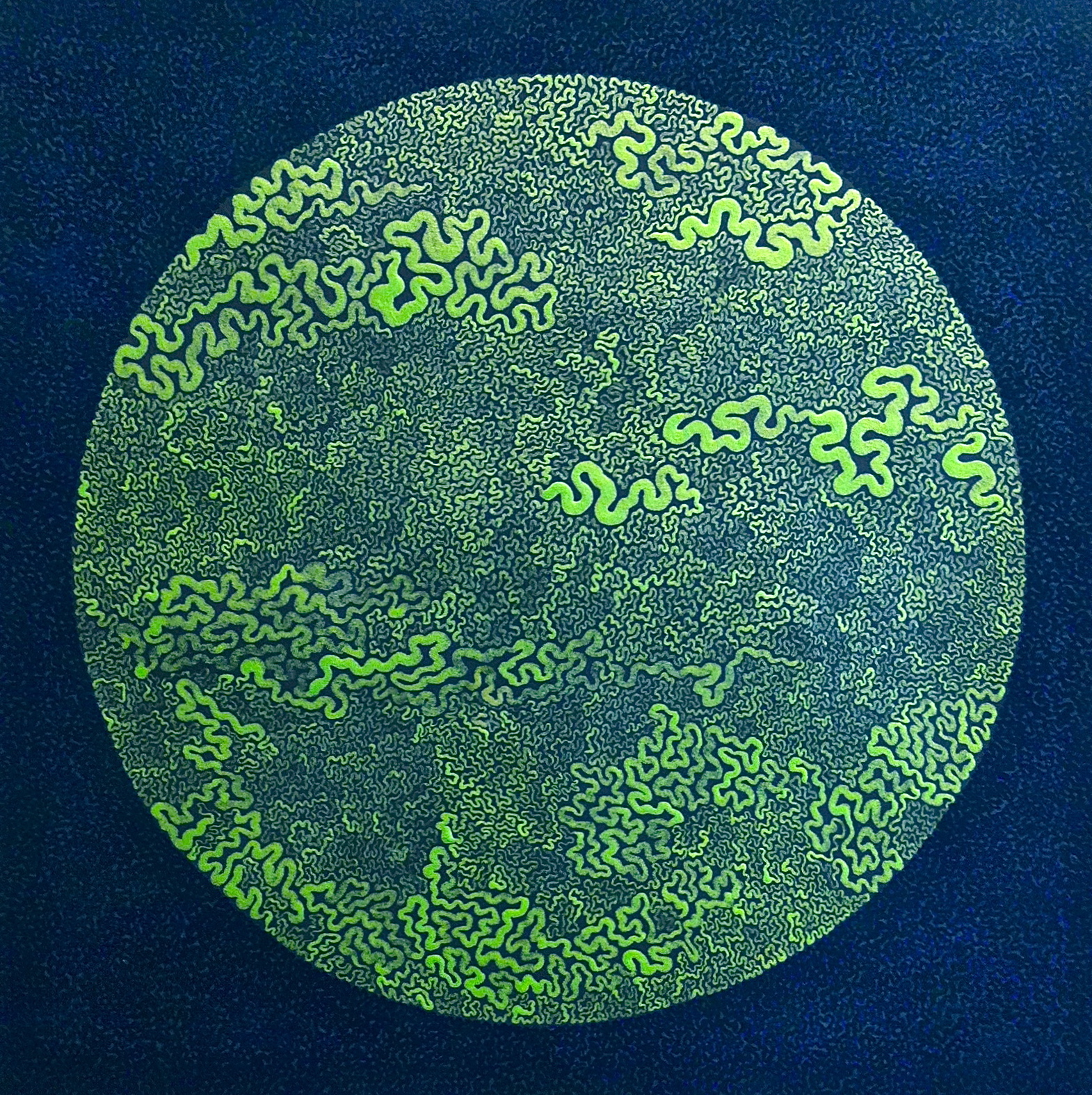
Artist’s Interpretation, Mary Ellen Scherl 4
An artist’s interpretation of chromatin folded up inside the nucleus. The artist has rendered an extraordinarly long contour into a small area, in two dimensions, by hand.
Credit: Mary Ellen Scherl. -

Artist’s Interpretation, Mary Ellen Scherl 5
An artist’s interpretation of chromatin folded up inside the nucleus. The artist has rendered an extraordinarly long contour into a small area, in two dimensions, by hand.
Credit: Mary Ellen Scherl. -
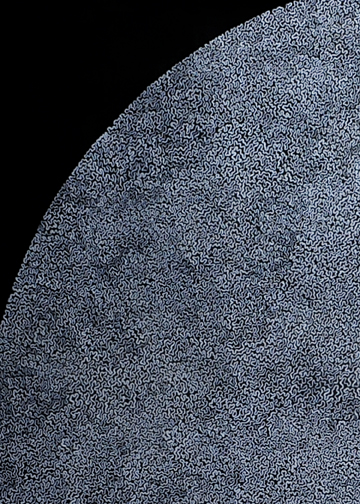
Artist’s Interpretation, Mary Ellen Scherl 6
An artist’s interpretation of chromatin folded up inside the nucleus. The artist has rendered an extraordinarly long contour into a small area, in two dimensions, by hand.
Credit: Mary Ellen Scherl. -

Artist’s Interpretation, Mary Ellen Scherl 7
An artist’s interpretation of chromatin folded up inside the nucleus. The artist has rendered an extraordinarly long contour into a small area, in two dimensions, by hand.
Credit: Mary Ellen Scherl. -

Artist’s Interpretation, Guhapriya Ranganathan 1
An artwork inspired by the problem of genome folding, by Broad Institute Artist-in-Residence Guhapriya Ranganathan. This originally appeared in her exhibition, Unfolding.
Credit: Guhapriya Ranganathan. -
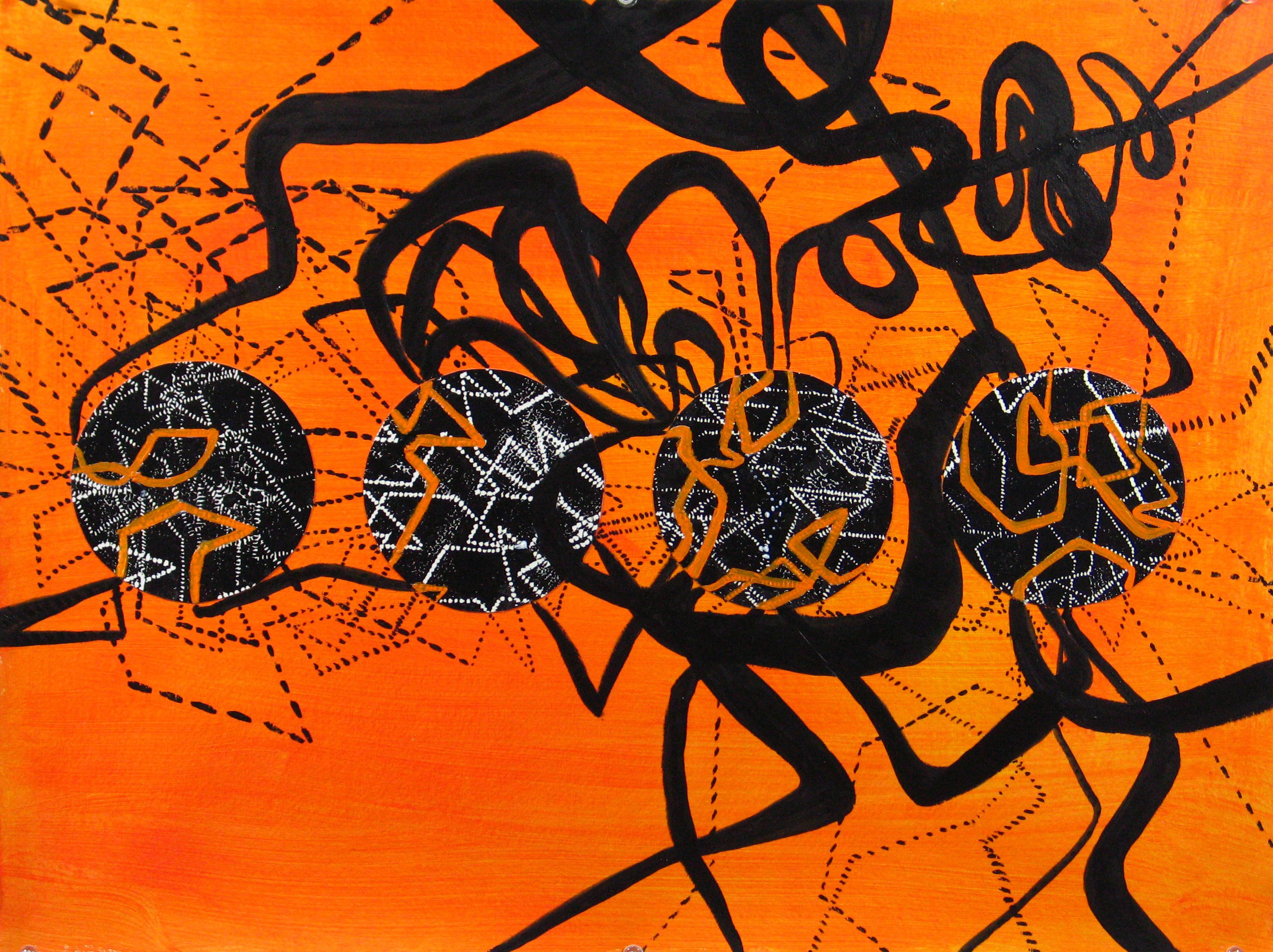
Artist’s Interpretation, Guhapriya Ranganathan 2
An artwork inspired by the problem of genome folding, by Broad Institute Artist-in-Residence Guhapriya Ranganathan. This originally appeared in her exhibition, Unfolding.
Credit: Guhapriya Ranganathan. -

Artist’s Interpretation, Guhapriya Ranganathan 3
An artwork inspired by the problem of genome folding, by Broad Institute Artist-in-Residence Guhapriya Ranganathan. This originally appeared in her exhibition, Unfolding.
Credit: Guhapriya Ranganathan. -
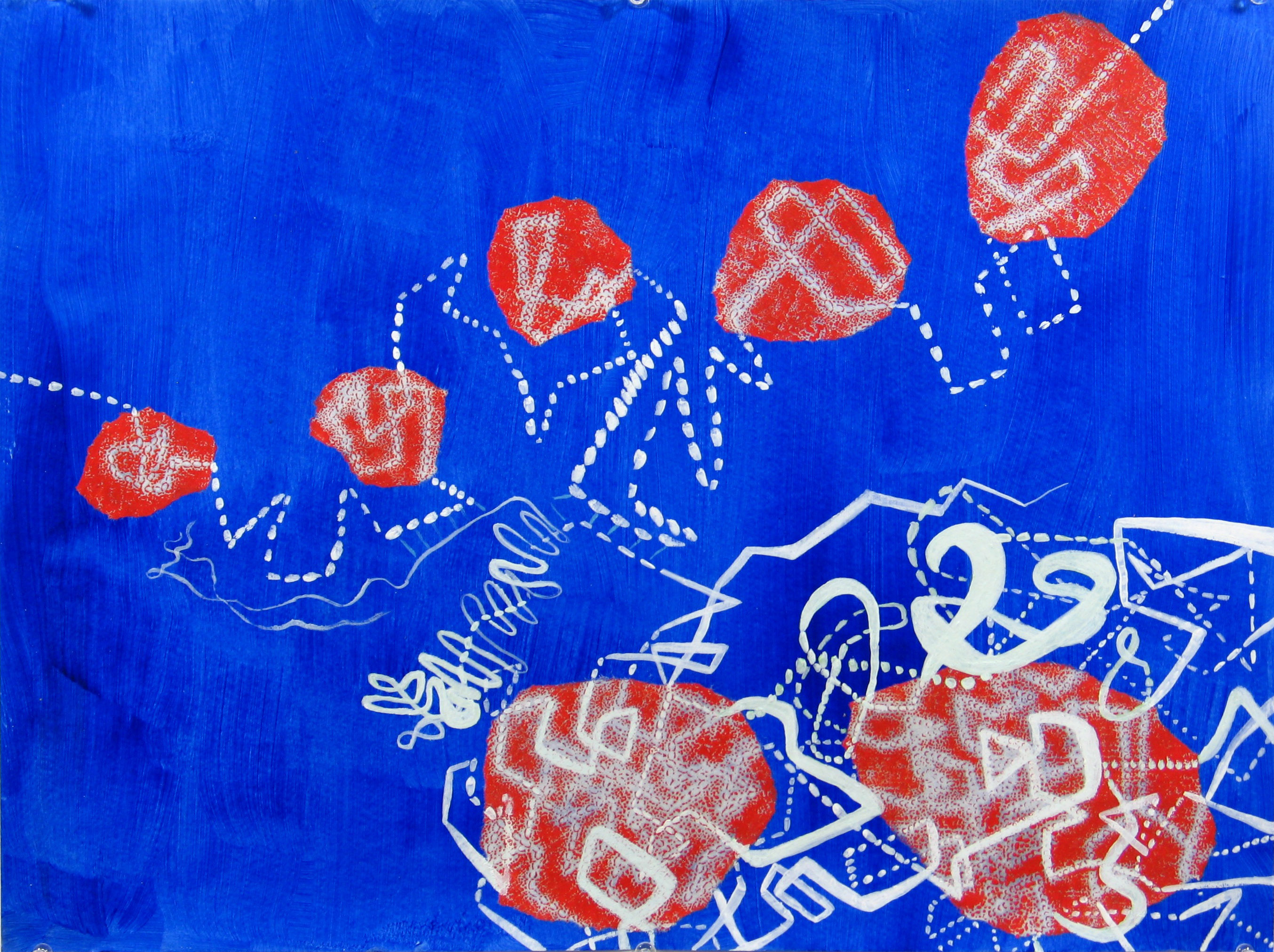
Artist’s Interpretation, Guhapriya Ranganathan 4
An artwork inspired by the problem of genome folding, by Broad Institute Artist-in-Residence Guhapriya Ranganathan. This originally appeared in her exhibition, Unfolding.
Credit: Guhapriya Ranganathan. -

Artist’s Interpretation, Guhapriya Ranganathan 5
An artwork inspired by the problem of genome folding, by Broad Institute Artist-in-Residence Guhapriya Ranganathan. This originally appeared in her exhibition, Unfolding.
Credit: Guhapriya Ranganathan. -
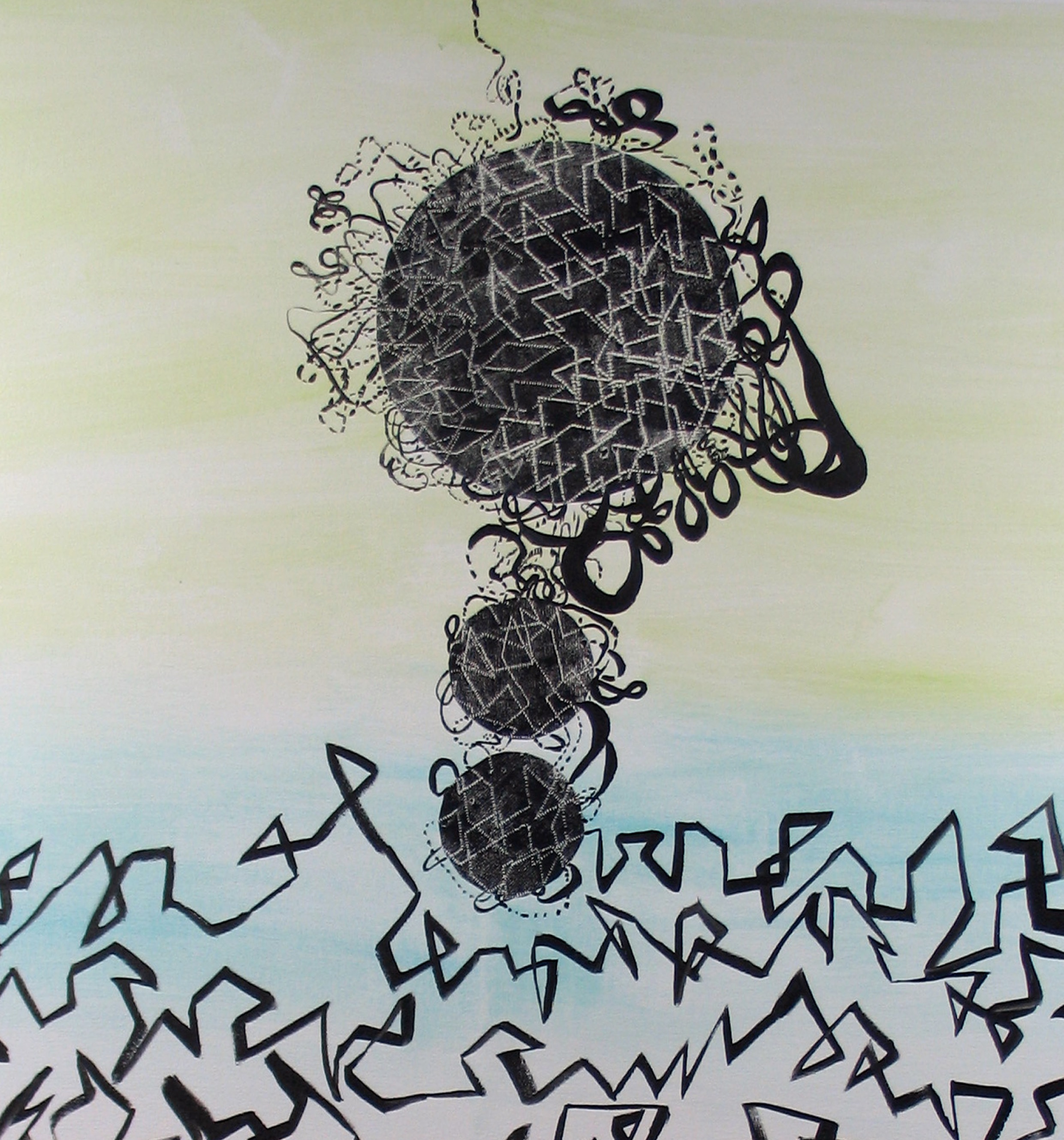
Artist’s Interpretation, Guhapriya Ranganathan 6
An artwork inspired by the problem of genome folding, by Broad Institute Artist-in-Residence Guhapriya Ranganathan. This originally appeared in her exhibition, Unfolding.
Credit: Guhapriya Ranganathan. -
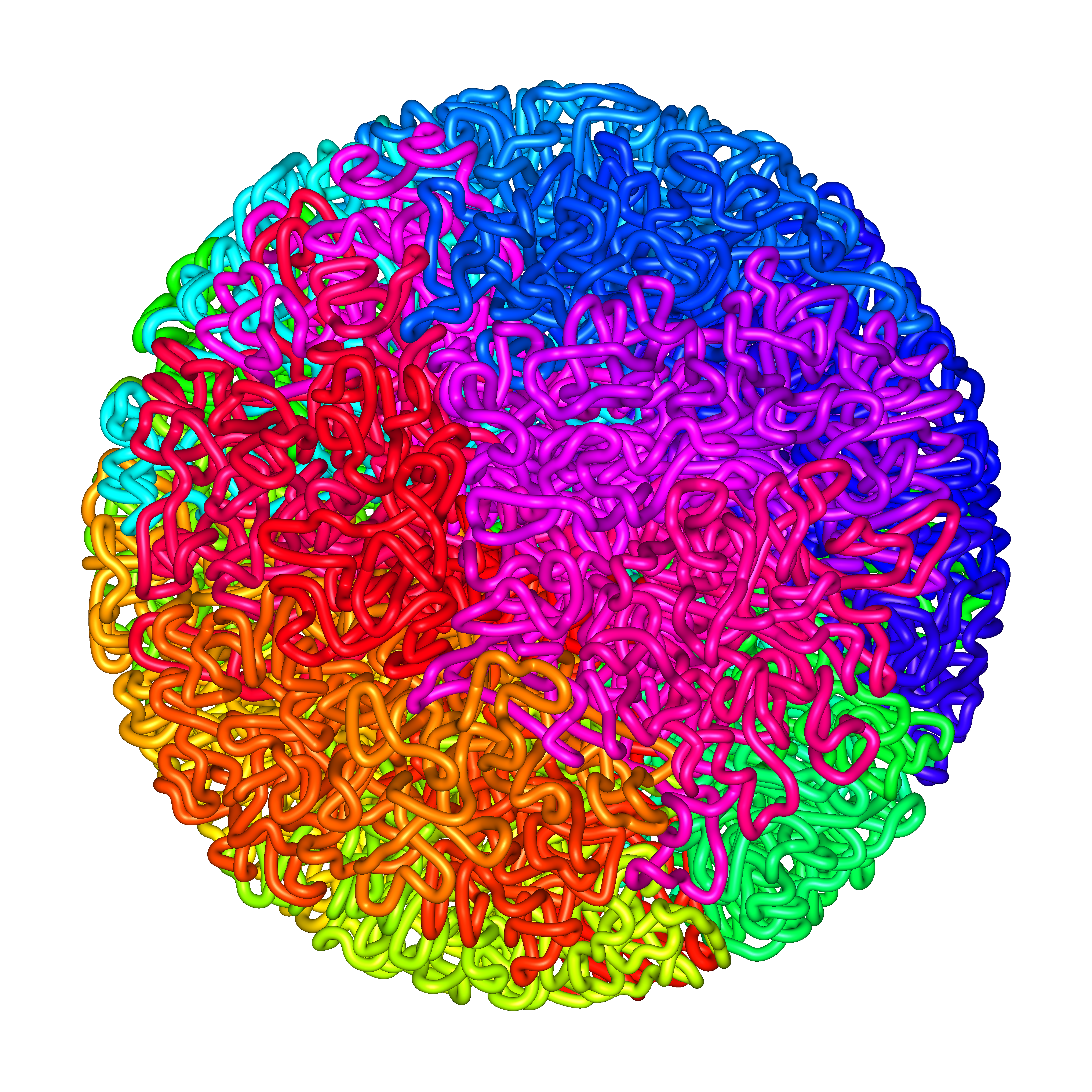
Fractal Globule
In this image, nearby regions on a chain of DNA are indicated using similar colors. The fractal globule is has a hierarchical organization; regions nearby along the chain are also nearby in 3D. The fractal globule is extraordinarily dense, but entirely unknotted. Our group's earlier work suggested that long stretches of DNA fold into fractal globules.
Credit: Miriam Huntley, Rob Scharein, and Erez Lieberman Aiden. -
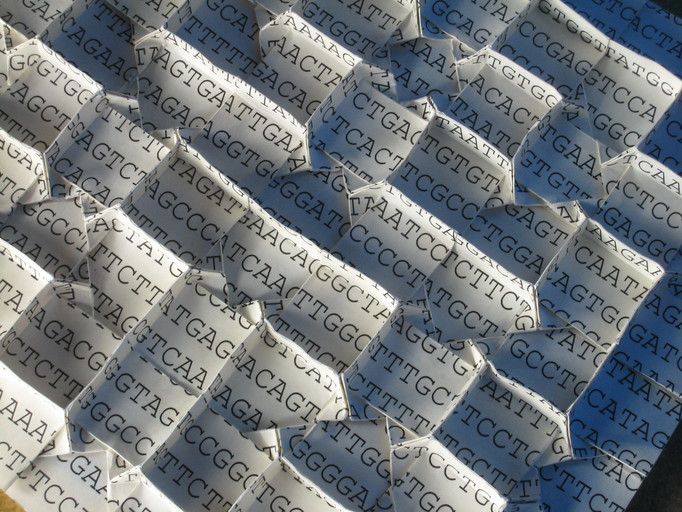
Chromosome 14 Origami 1
A segment of chromosome 14 folded to reveal a fractal curve using Origami, the Japanese art of paper folding. Our group's earlier work suggested that long stretches of DNA fold into Peano curve-like fractals.
Credit: Designed and folded by Jason Ku. Photo by Erik Demaine. -
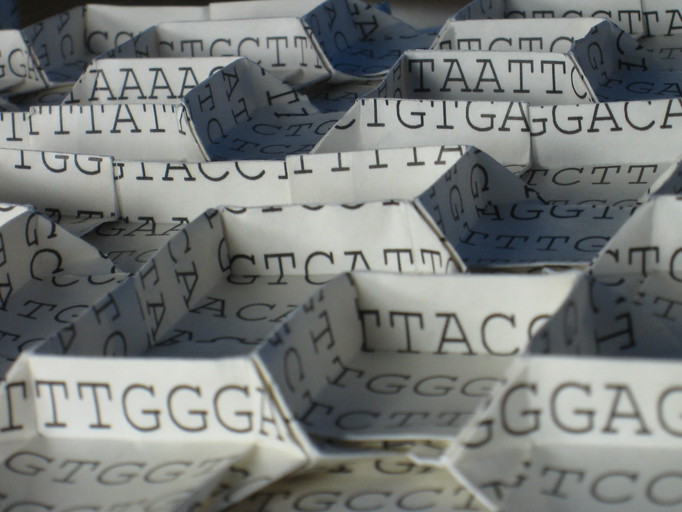
Chromosome 14 Origami 2
A segment of chromosome 14 folded to reveal a fractal curve using Origami, the Japanese art of paper folding. Our group's earlier work suggested that long stretches of DNA fold into Peano curve-like fractals.
Credit: Designed and folded by Jason Ku. Photo by Erik Demaine.